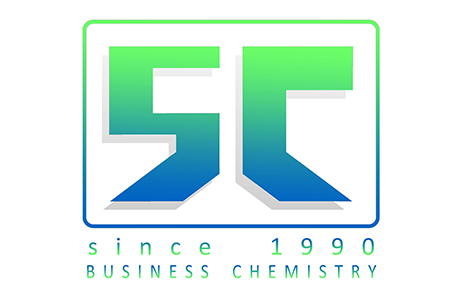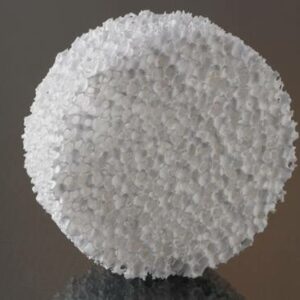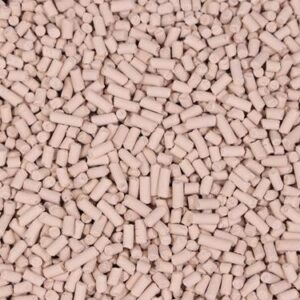Description
VGO/Light feed Cracking Catalyst
Description
HGY series catalyst is designed for increasing gasoline yield, RON and bottoms conversion,
with less coke make, while processing VGO (vacuum gasoline oil) feedstock. By increasing the
specific surfaces of medium/large pores in the matrix, strengthening the activity of the matrix,
and using a modified, ultra-stable Y-zeolite with enough mesopores as an active component, the
catalyst achieves the desired cracking performance. The mesopores of the modified, ultra-stable
zeolite improve cracking ability, which is favorable for the diffusion of the cracking products and
for minimizing the secondary reaction of primary products, thereby giving better gasoline yield
and reducing coke formation.
Commercial application result shows that the gasoline yield increases by 2.46% and coke yield
decreases by 0.76% compared with the base catalyst.
Application
HGY
FCC unit
Residual/Heavy Oil Cracking Catalyst
Description
SGC/RICC/COKC/VRCC series heavy oil cracking catalysts are designed with excellent stability
and metals tolerance, as well as reduced coke formation capability and enhanced heavy oil
conversion. These catalysts are formulated with modified active-alumina, clay matrix, and
structure-optimized zeolite (SOZ). Compared to the conventional USY zeolite, SOZ has higher
crystallinity, larger surface area and larger pore volume, resulting in better thermal/hydrothermal
stability. This is beneficial for the accessibility of hydrocarbon molecules to the active site,
thereby improving cracking activity. Meanwhile, a large-pore matrix allows for adjustment of the
pore diameter and improved bottom cracking activity with less coke formation.
Commercial application results show that compared with reference catalyst, the conversion
increases by 3.91%, total liquid yield increases by 3.48%, gasoline yield increases by 3.52%,
olefin content in gasoline decreases by 2.6%, and coke yield decreases by 0.25%.
Application
SGC/RICC/COKC/VRCC
FCC/RFCC unit
Residual/Heavy Oil Cracking Catalyst
Description
MAC series catalyst for bottom cracking applies the modified rectorite as active carrier and the
structure optimized SOY-12 molecular sieve. SOY-12 molecular sieve has low content of sodium
and unblocked pore channel, and it presents good accessibility of acid sites, low coke selectivity
and good thermal stability and hydrothermal stability. Furthermore, the modified rectorite can
tailor the pore size of catalyst, and then improve the catalyst bottom cracking ability and the
coke selectivity.
Application
MAC
FCC/RFCC unit
Residual/Heavy Oil Cracking Catalyst
Description
CDC series catalyst can meet the needs of propylene yield and certain demands of product
distribution simultaneously. It is a “Chemically Designed Catalyst”, and has good acid sites
accessibility to heavy oil molecules and excellent desorption/diffusion capability, which benefit
from the gradient pore distribution and gradient acid centers. CDC series catalyst also possesses
excellent activity stability, deep heavy oil conversion capability, good hydrogen transfer activity
and good coke selectivity.
Application
CDC
FCC/RFCC unit
Residual/Heavy Oil Cracking Catalyst
Description
The use of disordered mesoporous material JSA, and HRY type molecular sieve to form a
pore gradient and acidity gradient, provides the possibility for the efficient conversion of
macromolecules, even in the case of increasing blending ratio of residue and deterioration of
feed properties, it still shows high cracking activity. After using CRM catalyst, the breaking of
side chain of heavy oil macromolecules increases, so the product distribution is improved.
Commercial application results show that compared with reference catalyst, total liquid yield
increases by 1.86%, LPG yield increases by 0.5%, the gasoline and diesel yields increase by 1.18%
and 1.10% respectively, coke yield decreases by 1.59%
Application
CRM
FCC/RFCC unit
Anti-Basic Nitrogen
Description
ABC/CABC series catalysts are developed for processing high nitrogen and high basic nitrogen
content feedstock, like CGO or DAO blended heavy oil. They are formulated with anti-basic
nitrogen deactivation capability by increasing acidity of catalyst, applying large pore volume
matrix with proper acidity and improving physi-chemical properties of the catalysts through
advanced catalyst manufacturing technology. They perform well in heavy oil conversion, even
when the basic nitrogen content of feedstock reaches about 1400ppm. Meanwhile, the catalysts
exhibit satisfactory performance in heavy oil conversion, higher gasoline yield, improved
selectivity and product distribution.
Application
ABC/CABC
FCC/RFCC unit
Metal Tolerance Catalyst
Description
CMT (Catalyst with Metal Trap) catalyst is a novel heavy oil upgrading catalyst, known for
its excellent tolerance to metals, e.g. vanadium, nickel and iron. It maintains good bottoms
conversion and fluidization performance even with high contaminant metals, especially with high
iron poisoning.
CMT catalyst has been developed for cracking of heavy oil, based on the metal trapping
technological platform which is effective on trapping & passivating contaminant metals. The
metal trapping platform contains metal capture components and activated alumina matrix for
metal passivator. Meanwhile, the metal trapping components are environmentally friendly. The
CMT catalyst maintains good heavy oil cracking performance and product selectivity, even with
the total contaminant metal content of E-cat exceeding 20000 ppm.
By using CMT catalyst, the gasoline and total liquid yield have been improved by 1.35wt% and
0.39wt% respectively. The commercial application demonstrates that the CMT catalyst featured
excellent metal tolerance.
Application
CMT
FCC/RFCC unit
Metal Tolerance Catalyst
Description
The main active component adopts a new generation of ultra-stable SRY molecular sieve
prepared by “hydrothermal plus chemical method”. This molecular sieve has high silicon and
aluminum content, less non-framework aluminum content, thus shows good hydrothermal
stability, excellent coke selectivity, good isomerization performance, and heavy oil cracking
ability. Activated alumina is used to further improve the cracking capacity of heavy oil and the
ability to resist the contamination of metals such as vanadium. The formula can also be adjusted
to increase the LPG yield or gasoline octane number.
Commercial application results show that when vanadium content in the feed reaches 18ppm,
the gasoline yield can keep 43.13%, diesel yield is 28.08%, and LPG yield is 7.15%
Application
CHV Series Vanadium Tolerance Catalyst
FCC/RFCC unit








Reviews
There are no reviews yet.